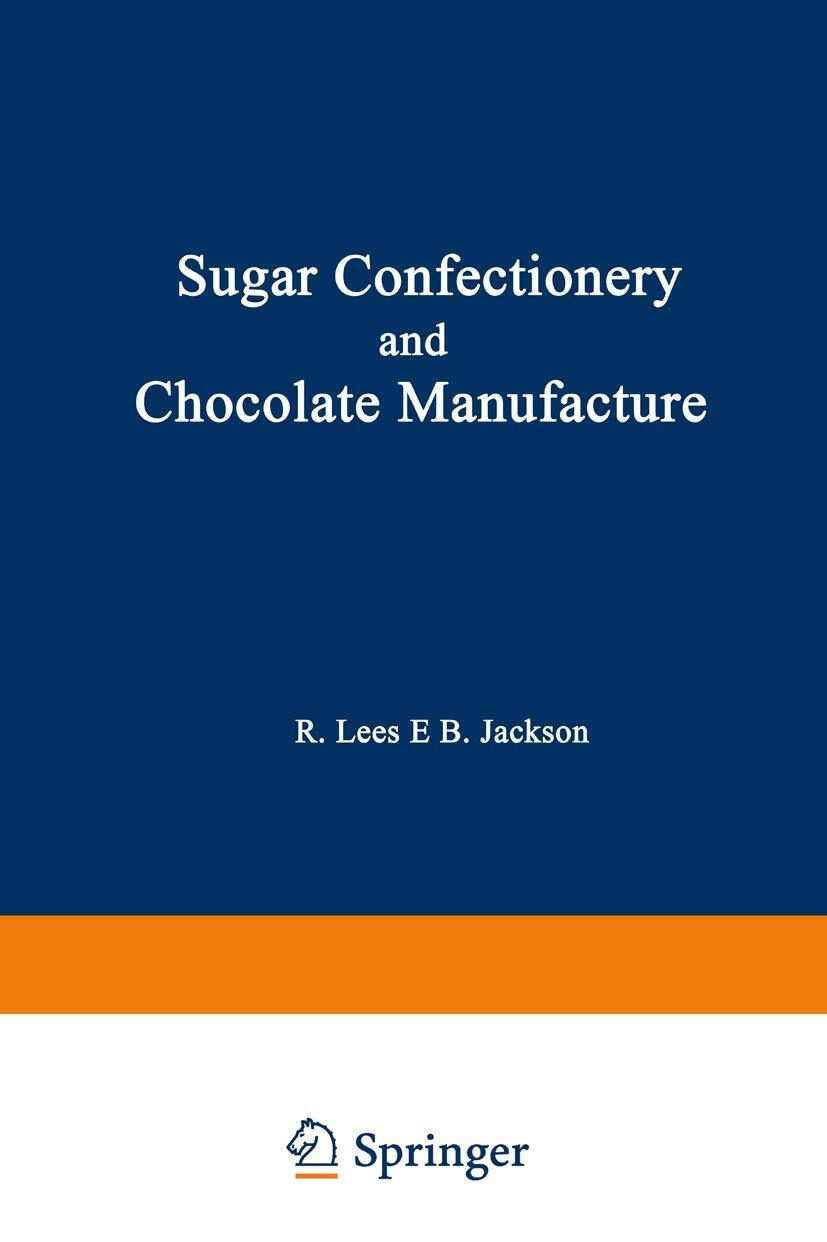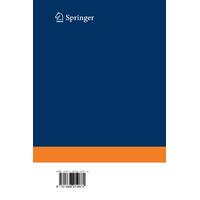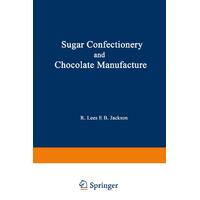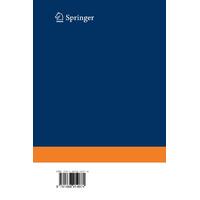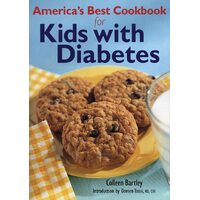Sugar Confectionery and Chocolate Manufacture
Author: Ron LeesPublisher: SpringerCategory: Business & Management, Food & Beverage Technology, General CookeryBook Format: PaperbackThe authors had five objectives in preparing this book: (i) to bring together relevant information on many raw materials used in the manufacture of sweets and chocolate; (ii) to describe the principles involved and to relate them to production with maximum economy but maintaining high quality; (iii) to describe both traditional and modern production processes, in par ticular those continuous methods which are finding increasing application; (iv) to give basic recipes and methods, set out in a form for easy reference, for producing a large variety of sweets, and capable of easy modification to suit the raw materials and plant available; (v) to explain the elementary calculations most likely to be required. The various check lists and charts, showing the more likely faults and how to eliminate them, reflect the fact that art still plays no small part in this industry. To help users all over the world, whatever units they employ, most for mulations are given in parts by weight, but tables of conversion factors are provided at the end of the book. There also will be found a collection of other general reference data in tabular form; while the Glossary explains a number of technical terms, many of them peculiar to the industry.
Table Of Contents
1 Basic Technical Considerations.- 1.1 Introduction.- 1.2 Moisture and Total Solids Content.- 1.3 Total Solids and Total Soluble Solids.- 1.4 Sugars and Sugar Solubility.- 1.5 Equilibrium Relative Humidity.- 1.6 Acid Content.- 1.7 pH.- 1.8 Gelling Agents.- 1.9 Viscosity.- 1.10 Texture.- 1.11 Crystallisation.- 2 Sugars and Related Materials.- 2.1 Cane and Beet Sugar.- 2.2 Honey.- 2.3 Glucose Syrup.- 2.4 Starch Hydrolysates.- 2.5 Liquid Sucrose and Mixed Sugar Syrups.- 2.6 Dextrose.- 2.7 Fructose.- 2.8 Maltose.- 2.9 Invert Sugar.- 2.10 Invertase.- 2.11 Lactose.- 2.12 Caramel.- 2.13 Spray Dried Caramel.- 2.14 Sorbitol.- 2.15 Glycerine.- 2.16 Malt Extract.- 3 Cocoa Beans.- 3.1 Growth.- 3.2 Types.- 3.3 Sources.- 3.4 Cocoa Fruit.- 3.5 Harvesting.- 3.6 Pulp.- 3.7 Fermentation.- 3.8 Drying.- 3.9 Diseases of Cocoa.- 3.10 Storage of Cocoa Beans.- 3.11 Storage Pests.- 3.12 Chocolate Flavour and Aroma.- 3.13 Bean Quality.- 4 Fats and Related Ingredients.- 4.1 General.- 4.2 Borneo Illipe (Illipe-Butter, Borneo Tallow).- 4.3 Coconut Oil.- 4.4 Groundnut Oil (Peanut Oil, Earthnut Oil).- 4.5 Palm Oil.- 4.6 Palm Kernel Oil.- 4.7 Butter.- 4.8 Off-flavours in Fats.- 4.9 Antioxidants.- 4.10 Oilseed Lecithins.- 4.11 Lecithin YN and other Synthetic Viscosity Reducing Agents.- 4.12 Glyceryl Monostearate.- 4.13 'Span' and 'Tween' Esters.- 4.14 Release Agents.- 4.15 Acetoglycerides.- 4.16 Waxes.- 5 Milk and Milk Products.- 5.1 Milk.- 5.2 Condensed Milk.- 5.3 Condensed Whey.- 5.4 Dried Milk Powders.- 5.5 Sodium Caseinate.- 5.6 Lactose.- 5.7 Butter.- 6 Gelling and Whipping Agents; Gums.- 6.1 Confectionery Starches.- 6.2 Modified Starches.- 6.3 Types of Maize Starch.- 6.4 Zein.- 6.5 Pectin.- 6.6 Gelatine.- 6.7 Agar Agar.- 6.8 Whipping Agents.- 6.9 Egg Albumen.- 6.10 Gelatine Hydrolysate.- 6.11 Whipping Agents based on Milk Protein.- 6.12 Whipping Agents based on Soya Proteins.- 6.13 Carrageenan.- 6.14 Chicle.- 6.15 Jelutong-Pontianak.- 6.16 Guar Gum.- 6.17 Arabinogalactan (Larch Gum).- 6.18 Quince Seed Gum.- 6.19 Properties of Whipping, Gelling and Thickening Agents.- 7 Flavouring and Colouring Agents.- 7.1 Flavourings.- 7.2 Essential Oils.- 7.3 Essences.- 7.4 Fruit Juices.- 7.5 Fruit Purees or Pulps.- 7.6 Powdered Flavours.- 7.7 Artificial Cherries.- 7.8 Dates.- 7.9 Date Syrup.- 7.10 Figs.- 7.11 Ginger.- 7.12 Liquorice.- 7.13 Nuts.- 7.14 Almonds.- 7.15 Brazil Nuts.- 7.16 Cashew Nuts.- 7.17 Sweet Chestnuts.- 7.18 Coconut.- 7.19 Hazel Nuts.- 7.20 Macadamia Nuts.- 7.21 Pecan Nuts.- 7.22 Peanuts.- 7.23 Pistachio Nuts.- 7.24 Walnuts.- 7.25 Sultanas.- 7.26 Currants.- 7.27 Raisins.- 7.28 Vitamins.- 7.29 Confectionery Acids and their Salts.- 7.30 Citric Acid.- 7.31 Sodium Citrate.- 7.32 Tartaric Acid.- 7.33 Cream of Tartar.- 7.34 Lactic Acid.- 7.35 Calcium Lactate.- 7.36 Acetic Acid (Ethanoic Acid).- 7.37 Malic Acid.- 7.38 Benzoic Acid.- 7.39 Sodium Benzoate.- 7.40 Sorbic Acid.- 7.41 Sodium Propionate.- 7.42 Colour.- 8 Cocoa, Chocolate and Related Products.- 8.1 Sequence of Processes.- 8.2 Cleaning.- 8.3 Roasting.- 8.4 Chocolate Recipes.- 8.5 Milk Crumb.- 8.6 Winnowing.- 8.7 Cocoa Powder.- 8.8 Mixing/Melangeur Process.- 8.9 Refining.- 8.10 Conching.- 8.11 The Tempering of Chocolate.- 8.12 The Application of Span 60 and Tween 60 in Sweet Dark Chocolate.- 8.13 Moulding.- 8.14 Fat Migration.- 8.15 Storage of Chocolate.- 8.16 Nutritional Value of Chocolate.- 8.17 Bulk Deliveries of Chocolate.- 8.18 Liqueur Chocolates.- 8.19 The Tropical Warehouse Moth.- 9 Boiled Sweets.- 9.1 Characteristics.- 9.2 The Production of High-boiled Sweets.- 9.3 Chemical Changes during Boiling.- 9.4 Invert Sugar in High-boiled Sweets.- 9.5 Batch Cooking.- 9.6 Batch Type Early Vacuum Process.- 9.7 Recipes for High-boiled Confections.- 9.8 Lettered or 'Seaside' Rock.- 9.9 Continuous Dissolving Methods.- 9.10 Continuous Cooking Methods.- 9.11 Continuous Vacuum Cooking.- 9.12 Deposited High-boiled Sweets.- 9.13 Pump Filling.- 9.14 Powder Filling.- 10 Caramels, Toffees and Fudge.- 10.1 Caramels and Toffees.- 10.2 Modifications to the Basic Recipe.- 10.3 Dulce de Leche.- 10.4 Caramel Recipe Compilation.- 10.5 Continuous Manufacture of Caramels.- 10.6 Properties of Caramels.- 10.7 Packaging and Storage.- 10.8 Export Caramels.- 10.9 Fudge.- 10.10 Variations on Basic Vanillin Fudge.- 10.11 Composition of Fudge.- 11 Fondants, Creams and Crystallised Confectionery.- 11.1 Fondants, Creams and Crystallised Confectionery.- 11.2 Production of Fondant.- 11.3 Creams.- 11.4 Composition of Creams and Fondants.- 11.5 Wet Crystallisation.- 11.6 Candied Fruit and Peel.- 11.7 Crystallised and Preserved Ginger.- 12 Gums, Jellies and Pastilles.- 12.1 Production.- 12.2 Processes for Gums and Jellies.- 12.3 Modification of Recipes for Continuous Production.- 12.4 Starch Drying and Conditioning.- 12.5 Glazing of Gums.- 12.6 Starch Moulding Machines of the Mogul Type.- 12.7 Other Points in Production.- 12.8 Starch, Gum Jellies and Pastilles by Atmospheric Cooking Methods.- 12.9 Starch Jellies for Continuous Production.- 12.10 Gelatine Jellies.- 12.11 Production of Gelatine Jellies.- 12.12 Fruit Pastilles.- 12.13 Tablet Jellies.- 12.14 Jelly Drops.- 12.15 Gum Arabic Gums.- 12.16 Turkish Delight.- 12.17 Agar Jellies.- 12.18 The Use of Powdered Pectins in Confectionery Manufacture.- 12.19 Low Methoxyl Pectin Jellies.- 13 Liquorice and Cream Paste.- 13.1 Liquorice.- 13.2 Methods for Manufacturing Liquorice Paste.- 13.3 Properties of Liquorice Paste.- 13.4 Composition of Liquorice.- 13.5 Processing Liquorice Paste.- 13.6 Cream and French Paste.- 13.7 Processing Cream Paste.- 13.8 Composition of Cream Paste.- 13.9 Extrusion of Cream Paste.- 13.10 Liquorice Allsorts.- 14 Tablets, Lozenges and Extruded Paste.- 14.1 Tablets.- 14.2 Slugging.- 14.3 Tablet Composition.- 14.4 Manufacture of Tablets.- 14.5 Lozenges.- 14.6 Composition of Lozenges.- 14.7 Production of Lozenges.- 14.8 Sweet Cigarettes.- 14.9 Production Control for Sweet Cigarettes.- 15 Marshmallow and Nougat.- 15.1 Marshmallow Confections.- 15.2 Frappe based on Egg Albumen, containing Starch.- 15.3 Gelatine Marshmallow.- 15.4 Continuous Production of Marshmallow using Gelatine.- 15.5 Egg Albumen Marshmallow.- 15.6 Modification of Recipes for Continuous Production.- 15.7 Nougat.- 15.8 Nougat using Egg Albumen.- 15.9 Nougat using Gelatine.- 15.10 Nougat using a Vertical Planetary Mixer.- 15.11 Nougat using Pressure Beating.- 15.12 Nougat using Malto-dextrins.- 15.13 Continuous Production of Nougat.- 16 Other Confectionery Types.- 16.1 Panning.- 16.2 Hard Pan Work.- 16.3 Polishing.- 16.4 Silver Coating.- 16.5 Chocolate Coating.- 16.6 Soft Panning.- 16.7 Chewing Gum.- 16.8 Sugarless Chewing Gum.- 16.9 Bubble Gum.- 16.10 Marzipan and Persipan.- 17 Calculating Sugar Confectionery and Chocolate Recipes.- 17.1 Calculation of Recipes from Analytical Results.- 17.2 Effect of Inversion.- 17.3 Effect of Milk Solids.- 17.4 Effect of Moisture Loss on Jelly Goods.- 17.5 Replacement Weight of Scrap Syrup.- 17.6 Calculation of Probable Analytical Composition from the Confectionery Recipe.- 17.7 Calculation of Syrup and Crystal Phase.- 17.8 Sugar Content of the Syrup Phase.- 17.9 Calculation of Boiling Temperature.- 17.10 Calculation of Chocolate Recipes.- 17.11 Count (Number of Confections) per Unit Weight.- 17.12 Determination of Equilibrium Relative Humidity (e r h).- 18 General Reference Tables.- 19 Glossary.(BK-9781468414974)
| SKU | BK-9781468414974 |
| Barcode # | 9781468414974 |
| Brand | Springer |
| Artist / Author | Ron Lees |
| Shipping Weight | 0.5500kg |
| Shipping Width | 0.150m |
| Shipping Height | 0.020m |
| Shipping Length | 0.230m |
| Assembled Length | 22.900m |
| Assembled Height | 2.100m |
| Assembled Width | 15.200m |
| Type | Paperback |
Be The First To Review This Product!
Help other Augoods users shop smarter by writing reviews for products you have purchased.

